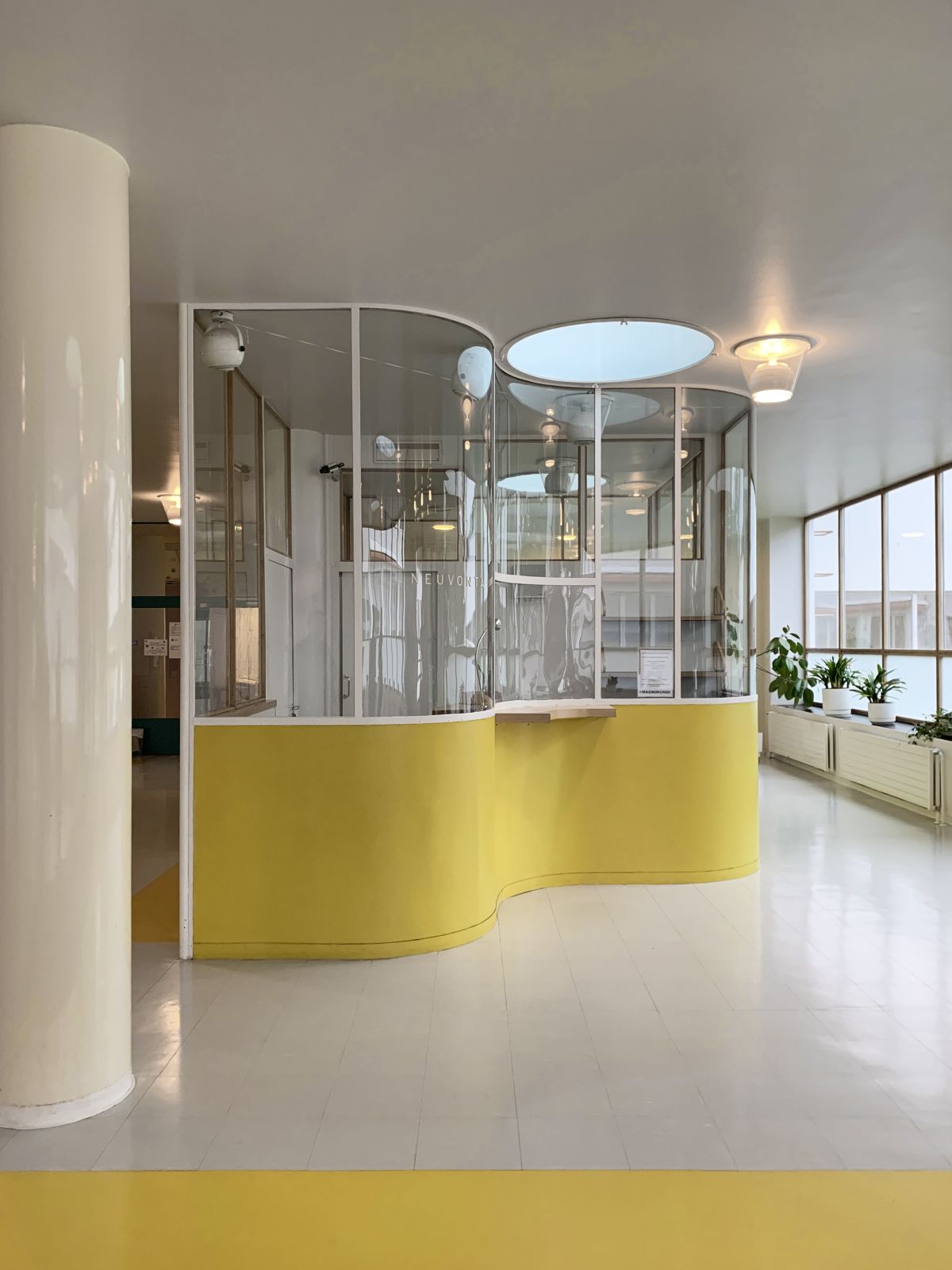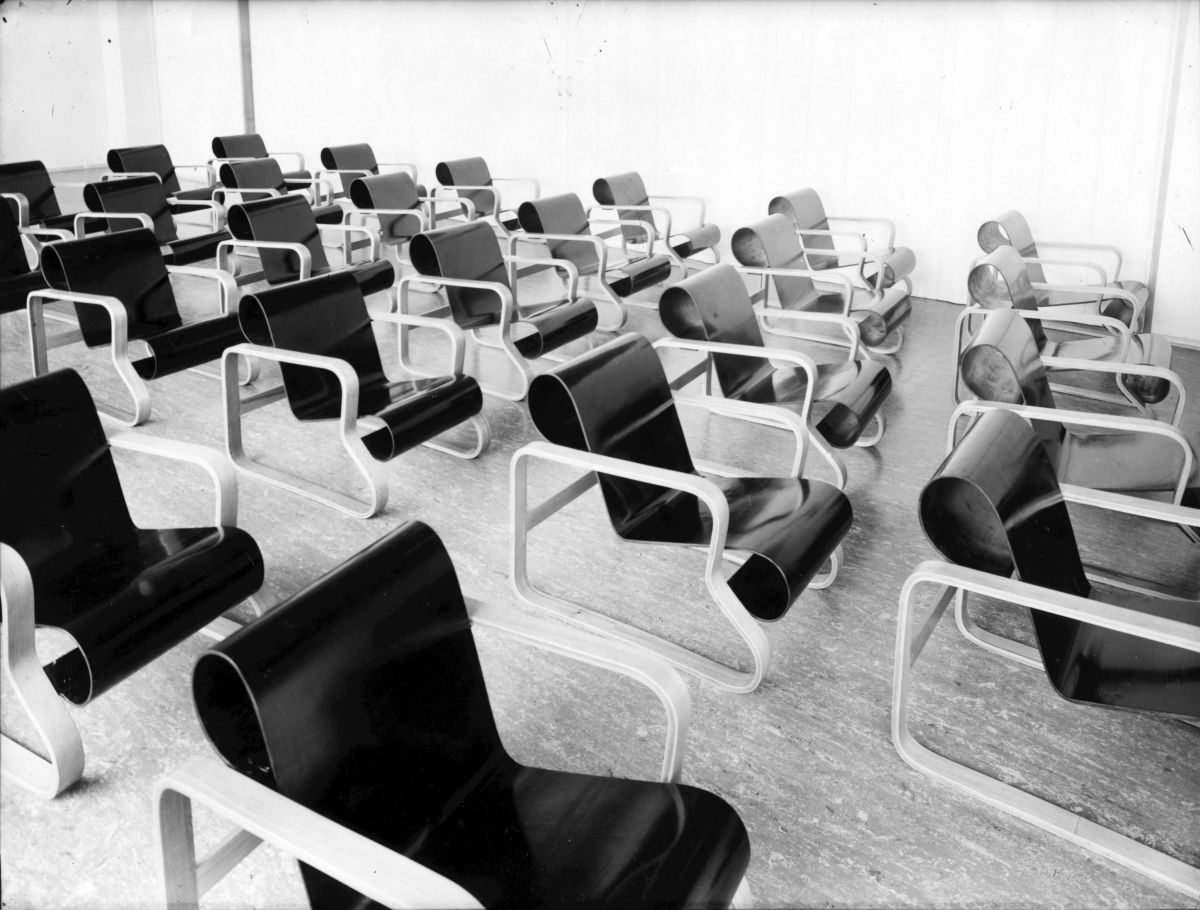

Alvar Aalto’s tuberculosis hospital in Paimio was acclaimed as the epitome of functionalism, yet unleashed a new humanism in design.
Upon its completion in 1933, Alvar Aalto’s Paimio Sanatorium, hidden in the forests of southwest Finland, received heady international acclaim. Every single detail – its noiseless sinks, covered door handles, gentle lighting, draft-free heating, colourful floors and each piece of its bespoke furniture – had been carefully tailored by Aalto, often together with his wife Aino, to the precise needs of recovering patients. Paimio Sanatorium was functionalism at its purest.
Yet Aalto had evolved a radical new vocabulary for modernism, embracing warm, natural, organic forms. His contemplation of the needs of patients lead him to turn away from metal – the archetypal material of modernism – and experiment with plentiful Finnish wood for the hospital’s furniture. The results proved to be light, warm, easy to clean and – a frequent Aalto concern – soundless when moved.
Some of Aalto’s most famous designs were first created for the Paimio Sanatorium as an integral part of what Aalto considered its “architectonic whole”. Yet they swiftly achieved universal status – so much so that many are still produced by Artek today. Armchair 41 – known as the Paimio chair – in particular has become an undisputed icon, entering the collection of every major design museum worldwide. As early as 1938, it was given pride of place at MoMA’s exhibition on Aalto in New York.
Armchair 41 set new standards in modern furniture design with its sculptural shape that tested the materiality of wood. Designed to aid recuperation and relaxation, the angle of the bent plywood back was considered ideal for the patients’ lungs and to promote easy breathing. The critical and commercial success of the Paimio Chair when displayed at London’s Fortnum & Mason store in 1933 helped lead to the founding of Artek, and it has remained in production ever since.
Aalto had hoped to create furniture that could help heal the patients at Paimio. He succeeded in creating humane designs that have been cherished for their beauty and function over decades.



